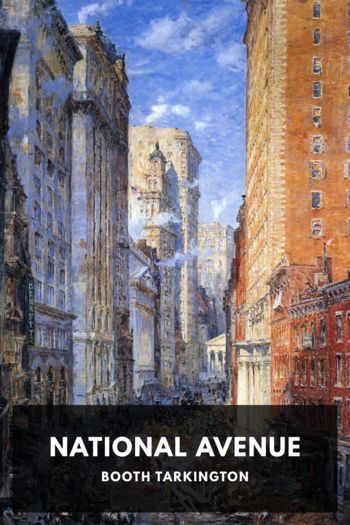Like a Virgin by Prasad, Aarathi (recommended reading txt) 📕

Read free book «Like a Virgin by Prasad, Aarathi (recommended reading txt) 📕» - read online or download for free at americanlibrarybooks.com
Read book online «Like a Virgin by Prasad, Aarathi (recommended reading txt) 📕». Author - Prasad, Aarathi
DNA tells our cells what to do and when to do it. You can think of it as the genetic equivalent of an instruction manual for flat-packed furniture. It gets read, and the information it gives is translated into building a new piece of kit. The section of DNA that when read translates into the production of a certain chemical is a gene. Most genes are translated into a series of amino acids, and amino acids are the building blocks of proteins. Proteins, in turn, are the main constituents of cells, which collect into tissues, which themselves collect into organs.
Genes are made up of what are called nucleotides, which are molecules made up of sugars, phosphates, and chemical bases (referred to by the first letters, A, T, C, and G, of their chemical names). DNA is a long chain of these units of nucleotides, each built on one of the four bases. Geneticists refer to the chain by the sequence of individual bases of the nucleotides as they appear (for example, GATTACA, which is where the 1997 science-fiction film got its name). Not all sequences of letters ‘spell out’ genes; many just regulate genes, others seem to do nothing at all. Usually two chains of nucleotides wrap around each other – this is what gives DNA the double helix, or twisted ladder, look. These long strands of DNA double helices wind round in tight coils to form the chromosomes. Normal human cells have forty-six chromosomes, wound in two pairs of twenty-three.
Unlike Gould, Galen did not have the benefit of witnessing the minutiae of how human embryos develop, let alone knowledge of hormones or of DNA and chromosomes. So though the reversal theory might sound something like modern biology, Galen married his theory to assumptions about an unequal division of labour in the work of reproduction, assumptions that reflect the prejudices of the day. For example, among the ancient Greeks, another of the great differentiators between men and women was temperature. Around the fifth century BCE, a doctrine of health had formulated based on the balance in the body of heat and cold, dryness and moistness. It was widely believed that illness would erupt if one of these qualities dominated over another. Galen, like Aristotle before him, thought that women inherently had a different balance of heat and cold than did men. He started with the principle that women were colder, a state that influenced their behaviour and contributed to an inferior physiology and limited reproductive power. He even compiled an ‘empirical’ work on bodily heat, called De Temperamentis. And it was empirical: he had drawn his conclusions from experiments in which he had touched a range of different people – the old, youths, children, and infants – in order to uncover who were more and who were less hot. Throughout his report, Galen used the word andres, meaning ‘men’, to describe the participants in his trials, rather than anthropoi, meaning ‘people’. That may be a distinction lost in translation, but it seems to indicate that the storied physician did not actually include any female subjects in an experiment from which he made the following judgements as to the nature of women:
Within mankind the man is more perfect than the woman, and the reason for the perfection is his excess of heat, for heat is Nature’s primary instrument. Hence in those animals that have less of it, her workmanship is necessarily more imperfect, and so it is no wonder that the female is less perfect than the male by as much as she is colder than he.
Though Galen did most certainly ponder, investigate, and experiment, there is no suggestion in any of his written accounts that his trials were ever conducted using women at all.
To Galen, the female of the species was not just inverted, she was incomplete, a view not substantially different from Aristotle’s ‘materially inferior’ daughter. Consider Galen’s analysis of the ‘female testes’. As incomplete male testes, the ovaries should be expected to produce semen. But this ‘female semen’ would not be as pure, or as hot, as the male’s, according to Galen. The ovaries, therefore, performed a function equivalent to the testes, but not as well. And he went ‘one up’ on Aristotle when he chose to refer to women as arrostos, a term most often used to mean a state of disease or morbid weakness. Unfinished, inverted, and in a state of morbid weakness – that’s what women were made of.
The question was, if it was male semen that made babies, what did it contain that could hold such great life-granting power?
At the time that Catherine de Medici was struggling to become pregnant, in the 1530s, most physicians still clung to such classical ideas of reproduction, by then more than two millennia old. And assumptions about the incredible potency of sperm animated the plans of the scientist later known as Paracelsus, who was studying medicine near Catherine’s home city of Florence around the time of her birth.
Philippus Bombastus von Hohenheim – who styled himself as ‘greater’ than the Roman physician Celsus – spent much of his life formulating a recipe for the creation of human life. His recipe involved hermetically sealing a man’s semen in a glass





Comments (0)